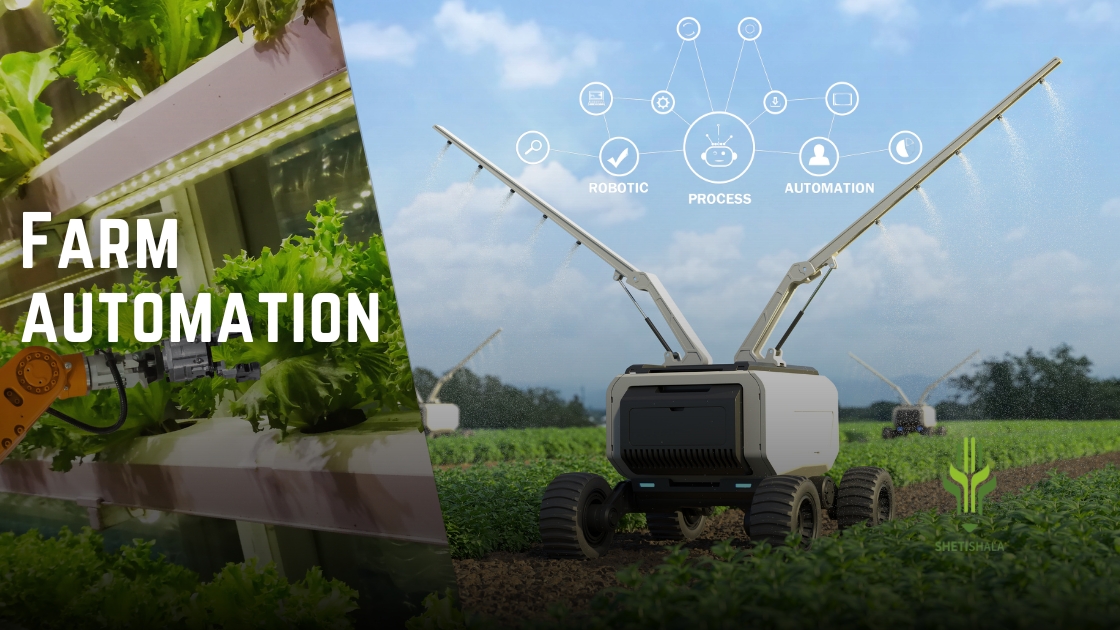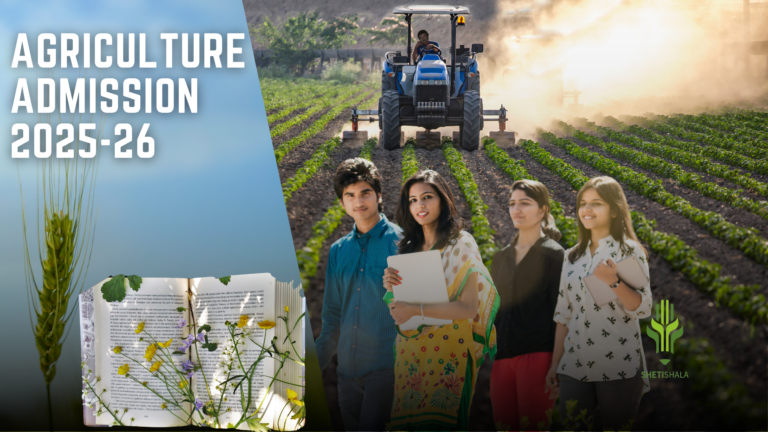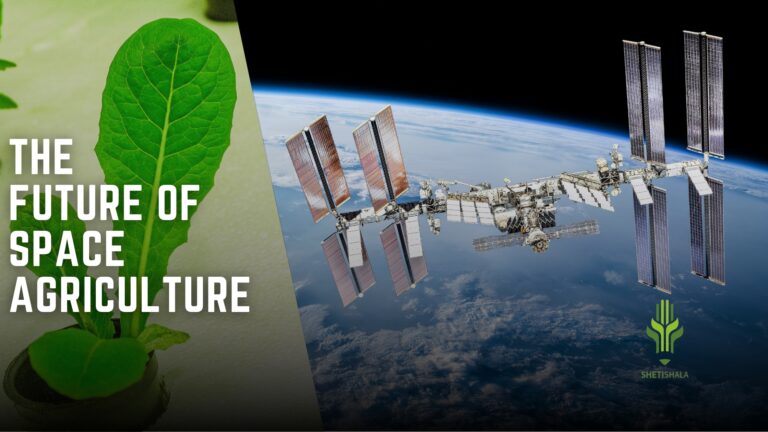Farm automation
Discover the future of farming with our blog on farm automation. Learn how technologies like greenhouse automation and robotics in agriculture are revolutionizing the industry by enhancing sustainability and efficiency. Explore the benefits of automated systems that optimize crop management, reduce labor costs, and promote sustainable farming practices. This blog provides an in-depth look at how farm automation is transforming traditional agriculture, making it more resilient and productive for the challenges of tomorrow. Stay informed on the latest trends and innovations driving the evolution of modern farming.
It refers to the use of technology and machinery to enhance the efficiency,
productivity, and sustainability of agricultural practices. This includes the implementation of
various automated systems and equipment that can perform tasks traditionally done by human
labour or with less advanced tools.

Key aspects of farm automation
1. Precision Agriculture:
Utilizes GPS, IoT, and data analytics to monitor and manage fields
more precisely. This can optimize planting, watering, and harvesting, leading to better crop
yields and reduced resource use.
2. Autonomous Machinery:
Tractors, harvesters, and other machinery that can operate
without human intervention. These machines are often equipped with sensors and AI to
navigate and perform tasks efficiently.
3. Drones:
Used for monitoring crops, soil health, and livestock. They can provide real-time
data and insights, helping farmers make informed decisions about their operations.
4. Robotics:
Robots can handle tasks such as planting, weeding, and harvesting. They are
particularly useful in labour-intensive or hazardous conditions, increasing productivity and
safety.
5. Automated Irrigation Systems:
Smart irrigation systems that adjust water usage based on
weather, soil moisture, and plant needs, reducing water waste and ensuring optimal growth
conditions.
6. Livestock Management:
Automated feeding, milking, and monitoring systems for
livestock. These systems can track animal health and productivity, leading to better
management and care.
7. Greenhouse Automation:
Controlled environment agriculture (CEA) uses sensors and
automation to regulate temperature, humidity, light, and other factors in greenhouses,
ensuring optimal growing conditions.
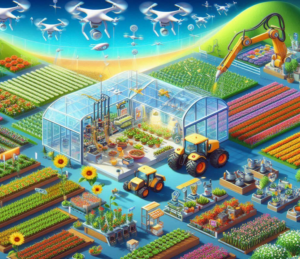
The goal of farm automation is to increase efficiency, reduce labour costs, and improve the quality and quantity of agricultural output. As technology continues to advance, farm
automation is expected to play a crucial role in meeting the global demand for food and
sustainable farming practices.
The growth of farm automation in agriculture has been driven by several factors, including
technological advancements, increasing labour shortages, the need for higher productivity,
and the push for sustainable farming practices.
key trends and developments that illustrate the growth of Farm Automation
1. Technological Advancements:
– Precision Farming:
The integration of GPS, IoT, and data analytics has revolutionized
how farmers manage their fields. Technologies such as satellite imagery, soil sensors, and AI driven analytics enable precise monitoring and management of crops.
– Drones and Aerial Imagery:
Drones equipped with high-resolution cameras and sensors
provide detailed aerial views of fields, helping farmers monitor crop health, identify pest
infestations, and assess irrigation needs.
2. Autonomous Machinery:
– Self-Driving Tractors and Harvesters:
Autonomous tractors and harvesters can operate
with minimal human intervention. These machines use GPS, computer vision, and machine
learning to navigate fields and perform tasks efficiently.
– Robotic Planters and Weeders:
Robots that can plant seeds and remove weeds
autonomously are becoming more common, reducing the need for manual labour and
increasing precision in planting and weeding.
3. Smart Irrigation Systems:
– Automated Irrigation:
Smart irrigation systems use weather data, soil moisture sensors,
and crop water requirements to optimize water usage. This reduces water waste and ensures
that crops receive the right amount of water.
– Drip Irrigation:
Advanced drip irrigation systems deliver water directly to the plant roots,
minimizing evaporation and maximizing water use efficiency.
4. Livestock Management:
– Automated Feeding and Milking:
Robotic milking machines and automated feeding
systems improve the efficiency of dairy and livestock farming. These systems monitor animal
health and adjust feeding and milking schedules accordingly.
– Wearable Technology:
Sensors and wearable devices for livestock monitor vital signs,
movement, and behaviour, providing real-time data to farmers for better herd management.
5. Greenhouse Automation:
– Controlled Environment Agriculture (CEA):
Automation in greenhouses includes climate
control systems, automated lighting, and nutrient delivery systems. These technologies create
optimal growing conditions and increase crop yields.
6. Market Growth:
– The global market for farm automation is expected to grow significantly. According to
various market research reports, the agricultural robotics market is projected to reach billions
of dollars in value over the next decade.
– Investments in ag-tech startups and research in agricultural robotics are increasing,
indicating a strong interest in advancing farm automation technologies.
7. Sustainability and Efficiency:
– Farm automation contributes to sustainable agriculture by reducing resource consumption
(water, fertilizers, pesticides) and minimizing the environmental impact of farming practices.
– Automated systems increase efficiency by reducing labour costs, increasing precision, and
enhancing overall productivity.
The growth in farm automation
reflects a broader trend towards digitization and
modernization in agriculture. As technologies continue to evolve, the adoption of automated
systems is likely to accelerate, transforming traditional farming practices and contributing to
a more sustainable and efficient agricultural industry.
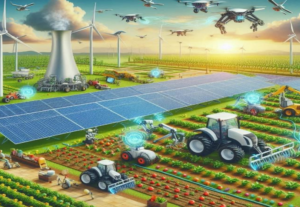
Essentials of farm automation
1. Precision Agriculture:
– GPS and IoT:
Utilization of GPS technology and Internet of Things (IoT) devices for
precise field mapping, monitoring, and management.
– Data Analytics:
Using big data and analytics to make informed decisions regarding crop
planting, irrigation, and harvesting.
2. Autonomous Machinery:
– Self-Driving Tractors and Harvesters:
Equipment that operates with minimal human
intervention, using sensors, GPS, and AI for navigation and task execution.
– Robotic Planters and Weeders:
Robots designed to plant seeds and remove weeds
autonomously, improving precision and efficiency.
3. Drones and Aerial Imagery:
– Field Monitoring:
Drones equipped with cameras and sensors provide detailed aerial
views of crops, helping detect issues like pest infestations and nutrient deficiencies.
– Crop Health Assessment:
Analysing drone-captured images to assess crop health and
make timely interventions.
4. Smart Irrigation Systems:
– Automated Irrigation:
Systems that adjust water delivery based on soil moisture levels,
weather forecasts, and crop needs, optimizing water use.
– Drip Irrigation:
Advanced systems that deliver water directly to plant roots, reducing
evaporation and ensuring efficient water usage.
5. Robotics in Agriculture:
– Harvesting Robots:
Machines capable of picking fruits and vegetables with precision,
reducing the reliance on manual labour.
– Sorting and Packing Robots:
Automation in post-harvest processes to sort and pack
produce, enhancing efficiency and reducing waste.
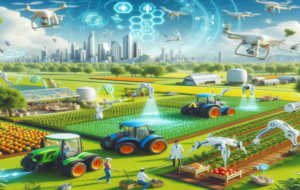
6. Livestock Management:
– Automated Feeding Systems:
Machines that dispense feed to livestock based on preset
schedules and nutritional requirements.
– Robotic Milking Machines:
Automated systems that milk cows, monitor their health, and
optimize milking schedules.
– Wearable Devices:
Sensors for livestock to track health metrics such as activity levels,
temperature, and overall well-being.
7. Greenhouse Automation:
– Climate Control Systems:
Automated systems to regulate temperature, humidity, and light
within greenhouses, creating optimal growing conditions.
– Nutrient Delivery Systems:
Precision delivery of nutrients to plants in a controlled
environment.
8. Monitoring and Management Software:
– Farm Management Systems (FMS):
Software that integrates data from various automated
systems, providing a centralized platform for managing farm operations.
– Predictive Analytics:
Tools that analyse historical data to predict future trends and
optimize farming practices.
9. Sustainability Practices:
– Resource Optimization:
Reducing the use of water, fertilizers, and pesticides through
precise application and monitoring.
– Energy Efficiency:
Utilizing renewable energy sources and energy-efficient technologies
in farm operations.
10. Economic Benefits:
– Cost Reduction:
Decreasing labour costs and improving resource use efficiency.
– Increased Productivity:
Enhancing crop yields and livestock productivity through
optimized farming practices.
– Market Competitiveness:
Staying competitive in the market by adopting advanced
technologies and improving overall farm performance.
Future of Farm Automation in India
Farm automation and the future of agriculture are closely intertwined, with advancements in
technology transforming traditional farming practices.
key trends and innovations:
1. Robotics and Drones:
Automated machinery like robots and drones are being used for
planting, harvesting, monitoring crops, and even spraying pesticides. These technologies
increase efficiency and reduce labour costs.
2. IoT and Sensors:
Internet of Things (IoT) devices and sensors collect data on soil moisture,
temperature, and crop health. This data helps farmers make informed decisions and optimize
resource use.
3. Precision Agriculture:
Precision farming uses GPS and data analytics to manage fields with
pinpoint accuracy. This approach minimizes waste, improves crop yields, and reduces
environmental impact.4. Artificial Intelligence and Machine Learning: AI and ML algorithms analyse data from
various sources to predict weather patterns, pest outbreaks, and crop performance, enabling
proactive farm management.
5. Autonomous Tractors and Machinery:
Self-driving tractors and other autonomous
machinery can work around the clock, increasing productivity and efficiency.
6. Vertical Farming and Hydroponics:
These innovative farming methods allow crops to be
grown in controlled environments, often indoors, using less water and land than traditional
farming.
7. Blockchain Technology:
Blockchain can enhance supply chain transparency and
traceability, ensuring the authenticity and safety of agricultural products.
8. Sustainable Practices:
Automation and technology enable more sustainable farming
practices, such as reduced chemical usage, optimized water management, and decreased
carbon footprints.

Conclusion :
Farm automation is essential for meeting the growing global demand for food, ensuring
sustainable farming practices, and enhancing the overall efficiency and productivity of
agricultural operations.
Farm automation is essential for modern agriculture, addressing challenges such as labour
shortages, resource inefficiency, and the need for increased productivity.
The future of agriculture lies in integrating these technologies to create smarter, more
efficient, and sustainable farming system
Visit the website of Government of India’s website for farm mechanization
for more such interesting blogs visit out other blogs – organic farming

